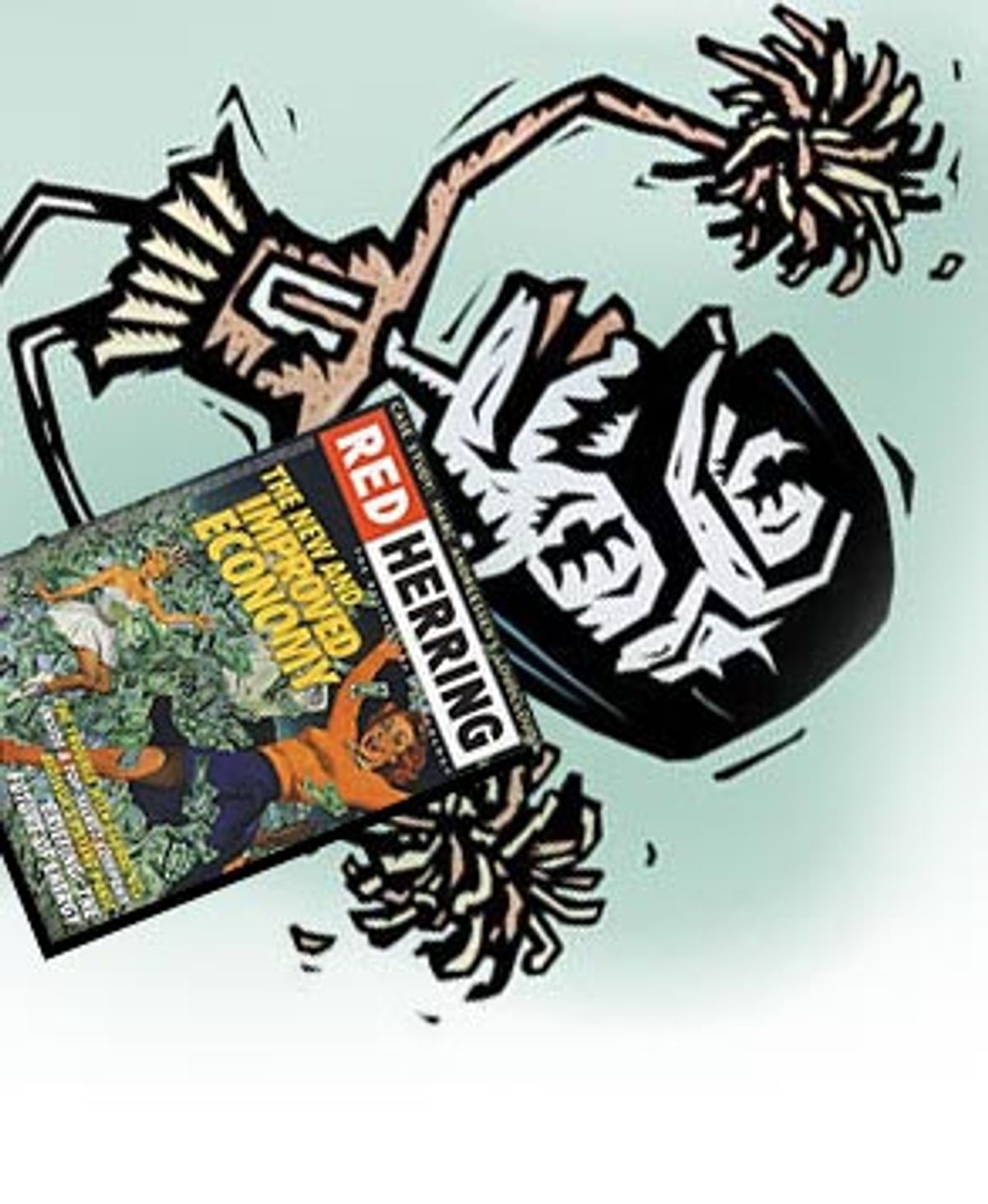On Feb. 28, Red Herring magazine, a flag-bearer for all things Silicon Valley, breathed its last. And so did the technology boom of the 1990s. Some dismissed the magazine as a new economy rag. Others saw it as "inside baseball" for venture capitalists. They were all wrong.
Unlike the Industry Standard, founded to cash in on the dot-com boom, Red Herring was the open diary of the wildly enthusiastic Silicon Valley of the 1990s. Established long before dot-com madness pillaged 401K plans, it mirrored a culture that celebrated entrepreneurs, their dreams and new technologies. In the process it became the bible of a religion called optimism. In the e-mail deluge that followed the magazine's obituary, many wondered: What went wrong?
To them I say, look at what went right. Born 10 years ago, Red Herring chronicled the rise of the personal computer, the unrelenting march of Moore's Law (which calls for the doubling of computer processing power every 18 months), and the amazing adoption of the Internet.
What went right? How about the total number of households with personal computers in America surging from less than 20 percent in 1990 to more than 65 percent in 2002? The number of cellphone users today stands at more than 140 million, 10 times the number who lugged around the bricklike Motorola back in the early 1990s. Today more than 25 million American homes get on the Internet using broadband connections that are 500 times as powerful as the 1,200-baud modems most used back in the early '90s. Technology's share of the U.S. gross domestic product went from less than 15 percent at the start of the 1990s to over 50 percent by the end of the decade.
Silicon Valley of the 1990s succeeded beyond its wildest dreams. Forget going to the photo lab -- today it is increasingly common to just download Junior's Little League photographs to your Sony VAIO. Alt.studio is an advertisement for a L'Oréal hair gel, not some obscure Usenet newsgroup. URLs to remember are those featured on PG-rated beer commercials, and text messaging is for voting for your favorite American idol.
In its early years, Red Herring covered pen computing and online video games. Now schoolchildren walk around with cheap Palms and the video game business is bigger than Hollywood. Last evening, my favorite bartender lamented how he could not download anything worthwhile from Kazaa, a marked shift from the good old days when a visit to a neighborhood saloon meant a lively debate about the Yankees and Mets.
If you pause and take the tally, the technology industry is now mainstream. Gone are the days when NASDAQ heroes like Cisco Systems and Intel grew at astonishing 25-percent-plus annual growth rates, little start-ups raised millions in venture capital, and red-hot initial public offerings were a norm. Instead, the technology business is trying to come to grips with a new reality -- single-digit growth rates.
This sequence of boom, bust and then gradual growth is part of every business cycle. In the 1920s, iceboxes and consumer appliances boomed and took markets to a manic high. After a while the sales of those appliances -- washing machines, dishwashers, irons and space heaters -- plateaued, and they have since grown at single-digit rates. Those were the cool new technologies of the Roaring '20s, just as the routers, switches, personal computers and cellphones were the new icons of the booming 1990s.
To draw further parallels, the Roaring '20s were in part inspired by mass-production methodologies, the key breakthroughs pioneered by Henry Ford, and his $5-a-day compensation to "incentivize" his workers. Ford's generous compensation turned his employees into a new "middle class" with consumerist expectations. In the 1990s Moore's Law acted as the catalyst for a new boom. Stock option incentives were dangled in front of an entire generation hoping to become a new upper class. Both booms ended with a stock market crash, and a recession.
But the technologies of the '20s did not go away after the crash; they got better and cheaper. Similarly, the key technologies of the 1990s will not go away; they will only improve over time.
And instead of being all about the investor, the tech boom has now become all about the consumer. Cisco, which for years has provided the plumbing for the Internet, recently spent $500 million to buy a company that sells WiFi products to consumers. After all, how many more Internet routers can it sell? Cisco now advertises its wares on prime-time television, while Intel hawks its goods in Vanity Fair. Blokes get their MP3 player tips from Maxim, and girls buy Sony Cliés because they are cute.
These companies know that their core audience has shifted from Red Herring readers to Moby fans. The religion that was optimism has become a religion of pragmatism. Red Herring, it seems, was the Old Testament. It is now time for a new one.



Shares